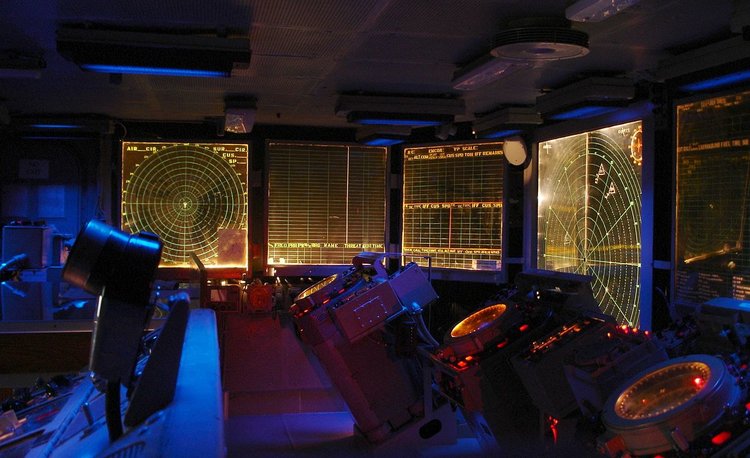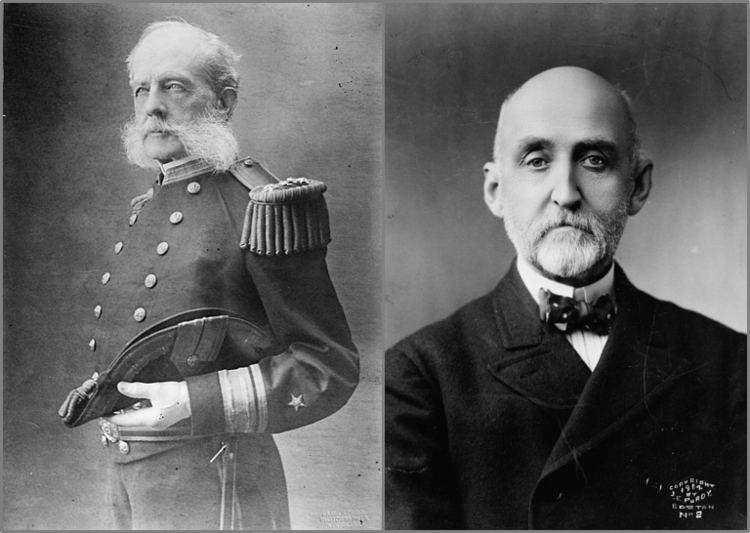Trent Hone. Learning War: The Evolution of Fighting Doctrine in the U.S. Navy, 1898-1945. Annapolis, MD: U.S. Naval Institute Press, 2018.

U.S. Navy photo by MC2 Anthony Flynn
The late nineteenth and early twentieth century reform and modernization of the U.S. Navy is a much studied topic. Building on his previous work, Trent Hone offers a detailed discussion of doctrinal change and modernization from the Spanish-American War through the end of World War II in Learning War: The Evolution of Fighting Doctrine in the U.S. Navy, 1898-1945.[1] In these years, the Navy changed from a traditional institution of the sailing era, relying on apprenticeship and on-the-job training at sea, to a modern learning organization that valued technology, professional education, and shore-based schools.[2] Hone integrates recent scholarship on complex systems and innovation into his examination and presents the Navy as a complex adaptive system whose successful innovations and "ability to change and reconfigure with unanticipated circumstances" produced victory in the Pacific Theater in World War II.[3]
Hone examines how the so-called New Navy of the twentieth century managed innovation and transformed doctrine in an era of rapidly changing technology, first emphasizing a centralized fleet's massed gunfire, and later the coordination of dispersed aircraft carrier task forces. He argues"the Navy's surface warfare doctrine in the first half of the twentieth century was an example of sustained and repeated innovation" and uses this evolving doctrine to examine "organizational development through the lens of complexity."[4] Efforts to improve gunnery following the Spanish-American War led to competitive systems in which successful innovations were assessed and disseminated to the fleet. After the First World War, the U.S. Navy applied these ideas to other areas to promote innovation and developed a combat heuristic that emphasized "quick and effective gunfire, reliance on individual initiative, and aggressive action."[5] Variation from ship to ship and command to command, a feature of the interwar Navy, fostered and sped innovation during World War II as individual officers implemented solutions to similar problems in different ways.
The U.S. Navy's flexibility and openness to incremental improvement produced a succession of advances, which Hone illustrates in chapters on range-finding and gunnery, offering detailed, but easy to understand, discussions of the issues involved. These expand our understanding of the interaction between shore-based educational institutions such as the Naval War College and the fleet at sea, whose squadrons conducted regular exercises and participated in annual fleet problems. As Hone notes, scholars have neglected surface warfare doctrine and focused most of their attention on aviation. Yet, surface warfare fundamentally shaped the Navy's doctrine and conduct of the Pacific War.
The night battles near Guadalcanal in late 1942 exposed two related problems to American commanders. First, U.S. squadrons at the time were a hodgepodge of different ships individually re-assigned as needed, hindering the development of cohesion and standard tactics, while rapidly changing tactical situations overwhelmed ship and squadron commanders in battle. The arrival of increasing numbers of ships in 1943 solved the former problem, while the Navy developed shipboard Combat Information Centers to solve the latter. Combat Information Centers gathered and plotted combat information from all sources, improved combat coordination among ships, and "redistributed the cognitive workload" that formerly overwhelmed commanders.[6]

Combat Information Center of the USS Hornet (ICRC)
Encouraged by Pacific Fleet commander Admiral Chester Nimitz and independently pioneered on several warships, particularly the destroyer Fletcher, the development of Combat Information Centers demonstrated the U.S. Navy's ability to learn quickly and incorporate those lessons, along with new doctrine and technologies, across the fleet. A November 1942 tactical bulletin required all U.S. warships to establish Combat Information Centers, but gave wide latitude for how ship captains managed both the physical and intellectual issues involved. Officers shared their experiences, and Nimitz's staff gathered, assessed, and distributed the results of these and their own experiments. These shaped implementation across the fleet, as well as the development of a common set of tactical concepts for small forces known as PAC-10. By mid-1943, radar technology, PAC-10, and Combat Information Centers gave U.S. warships a decisive edge in squadron engagements against the Imperial Japanese Navy, which lagged in radar development and failed to improve its management of combat information.
Similarly, Nimitz and his staff integrated pre-war experience from wargames and increasingly sophisticated fleet exercises with wartime lessons and their own experiments to develop "a radically new approach based on interchangeable ships, modular task forces, and mobile carrier groups," emphasizing aggressive action and seizing the initiative. This distributed network attacked and overwhelmed Japan's defensive perimeter.[7]
Hone is at his best when discussing the 1930s and World War II. While the Spanish-American War is a convenient point at which to begin an assessment of innovation in the Navy, the transformations he highlights were already well underway before that war. The Navy of 1898 was substantially different from that of 1878 or 1888. Hone points to the discredited narrative of gun-club officers that hindered the development of aviation, an idea long discarded by scholars of U.S. naval aviation. He also sometimes gets lost in his own hyperbole, as when characterizing incremental improvement and innovation as radical transformation or comparing the work of Mahan, Luce, and other late nineteenth century naval reformers with the spiritual impacts wrought by Buddha, Confucius, and the Hebrew prophets. Hone's evaluation of U.S. performance against the Imperial Japanese Navy would have benefited from greater use of Japanese sources, which is, unfortunately, a failing common to many recent works on the U. S. Navy in the 1930s and 1940s. Similarly, it would have strengthened his argument to include some discussion of the Atlantic Theater. The reader is left to wonder whether or not there were commonalities between the Navy’s adaptations to carrier warfare and night battles in the Pacific and the anti-submarine warfare and convoy protection of the Atlantic Theater.

Admiral Stephen B. Luce and Admiral Alfred Thayer Mahan (Wikimedia)
Nonetheless, this is an important study that dramatically advances our understanding of innovation and the importance of non-technological factors, particularly the development of learning systems, in successful innovation. It will be of use to scholars of both innovation and the U.S. Navy, as well as those with a general interest in those subjects. It offers a valuable case study in successful, long-term innovation in a complex, bureaucratic setting.
thestrategybridge.org
